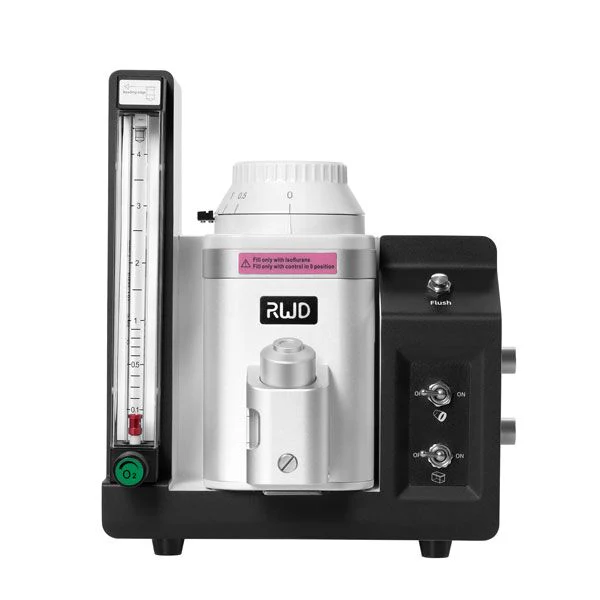When operating a small animal anesthesia machine, personnel safety is as important as animal welfare. Isoflurane, a common inhalant anesthetic, requires specific personal protective equipment (PPE) to minimize occupational exposure during the filling and maintenance of the isoflurane anesthesia system.
Respiratory Protection from Vapors
The primary route of exposure is inhalation of vapors, which can occur during the transfer of liquid isoflurane from the bottle to the vaporizer. Using a small animal anesthesia machine inside a certified chemical fume hood is the first line of defense. When this is not feasible, personnel must wear a properly fitted vapor respirator with organic vapor cartridges to prevent accidental inhalation.
Eye Protection from Splashes
Liquid isoflurane can cause severe eye irritation. Safety goggles that provide a seal around the eyes are necessary when handling the anesthetic liquid. Standard safety glasses are insufficient, as they do not protect against splashes from the side. This precaution is essential during any procedure where the isoflurane anesthesia liquid could be released from its container.
Skin Protection with Appropriate Gloves
Chemical-resistant gloves, made from materials like nitrile, should be worn to prevent skin contact. Liquid isoflurane can be absorbed through the skin, leading to localized irritation. Gloves offer a necessary barrier during tasks such as changing out anesthetic bottles on the small animal anesthesia machine or cleaning up a spill.
Adhering to these PPE protocols helps ensure a safe laboratory environment for all personnel working with isoflurane anesthesia. The consistent use of this safety equipment, combined with the reliable performance of a small animal anesthesia machine from providers like BPLabLine, supports both rigorous research standards and the well-being of the research team.
